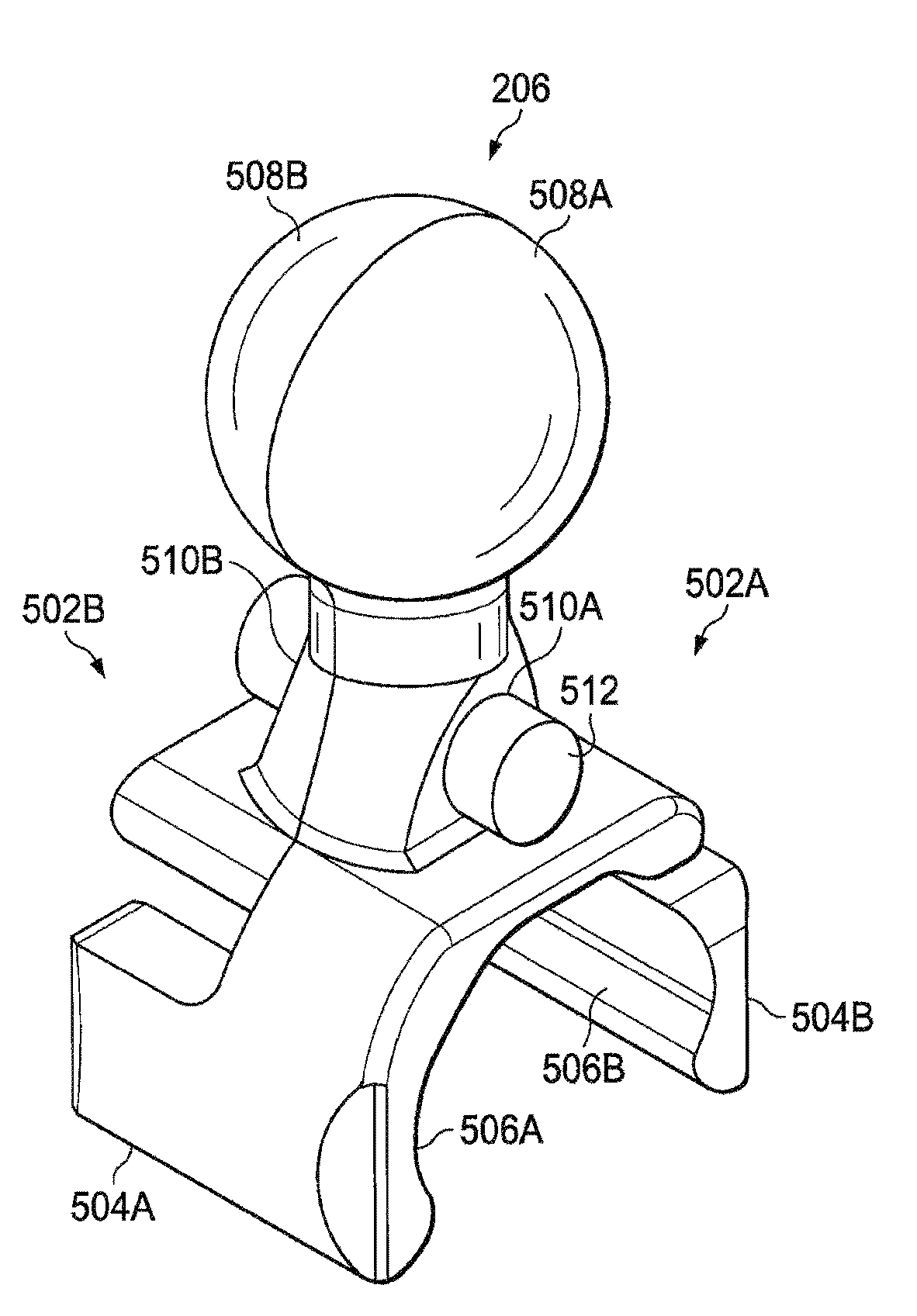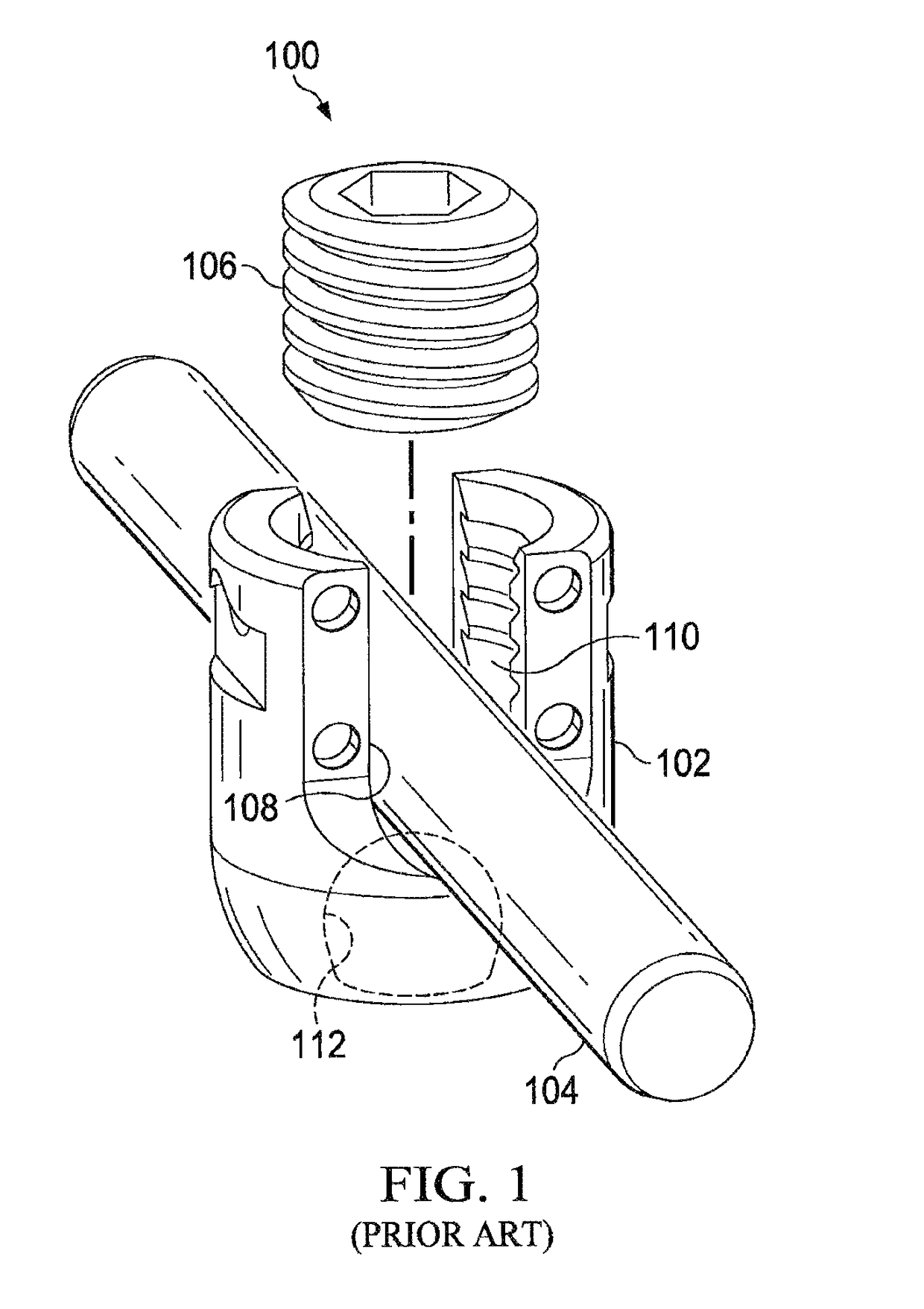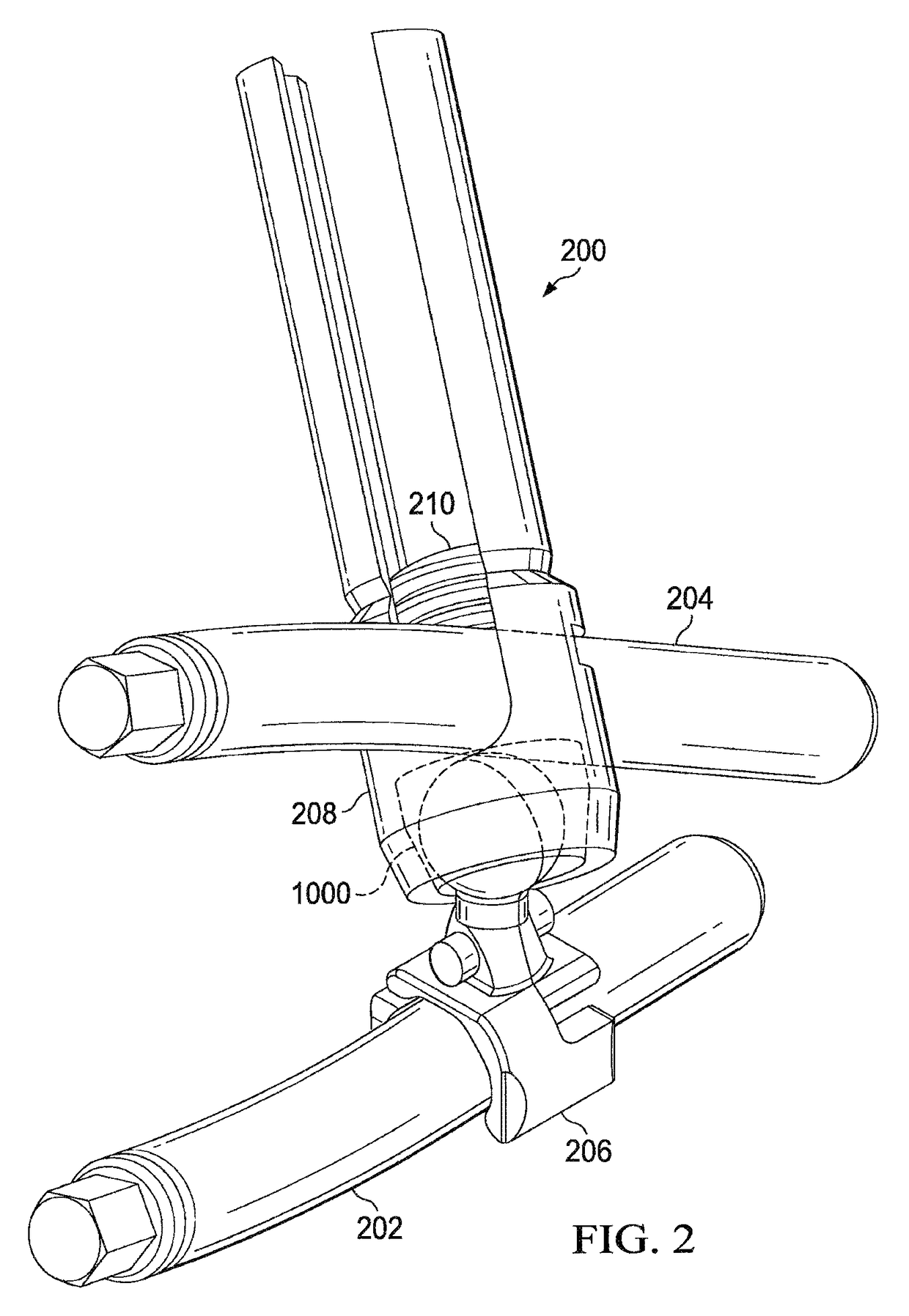Percutaneous rod-to-rod cross connector
a cross-connector and percutaneous technology, applied in the field of minimally invasive surgical screw system, can solve the problems of limiting the range of spinal pathologies, increasing the likelihood that surgery may be needed to correct one or more spinal pathologies, and spinal pathologies
- Summary
- Abstract
- Description
- Claims
- Application Information
AI Technical Summary
Benefits of technology
Problems solved by technology
Method used
Image
Examples
Embodiment Construction
[0038]For purposes of describing and claiming the present disclosure, the term “interference fit” is intended to refer to physical contact between two or more components and may include a slip fit, a ball-joint fit, or similar fit between two or more components. In addition, the terms “modular” and “modularity” are intended to refer to the interactions between the various components of the rod-to-rod cross connecting system described herein. Various combinations of individual components may come pre-assembled together, or each component may be assembled together component-by-component during surgery.
[0039]FIG. 1 depicts a prior rut connection system 100 for connecting a fastener element (e.g., a pedicle screw, not shown) relative to a rod 104 for vertebral fixation. Connection system 100 may comprise a U-shaped body 102, the rod 104, and a compression element 106. The rod 104 may be shaped to fit within the U-shaped body 102 at a rod receiving channel 108 with a slip fit. After the ...
PUM
 Login to View More
Login to View More Abstract
Description
Claims
Application Information
 Login to View More
Login to View More - R&D Engineer
- R&D Manager
- IP Professional
- Industry Leading Data Capabilities
- Powerful AI technology
- Patent DNA Extraction
Browse by: Latest US Patents, China's latest patents, Technical Efficacy Thesaurus, Application Domain, Technology Topic, Popular Technical Reports.
© 2024 PatSnap. All rights reserved.Legal|Privacy policy|Modern Slavery Act Transparency Statement|Sitemap|About US| Contact US: help@patsnap.com










